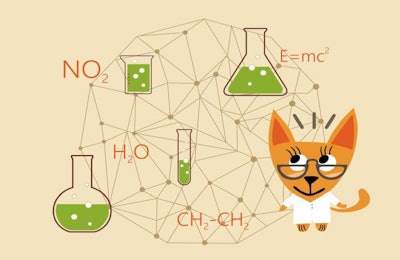
In 1931, Winston Churchill wrote of the potential for cultured meat, believing it absurd to grow whole chickens when specific pieces could be grown in a “suitable medium.” During the following ninety years, scientists never gave in as they researched the biological realities of cultured meat. Nearly a century after Churchill’s forecast, cultured meat has gone from $300,000 per patty in 2013 to pet food in 2021. Several companies, such as Bond Pet Foods and Because Animals, aim to bring meat grown from cell cultures into the pet food industry.
Earlier this month, one of those companies announced a partnership with the world’s fourth-largest pet food company by annual revenue, Hill’s Pet Nutrition. Hill's and Bond, a maker of fermented protein designed for cats and dogs, partnered to develop an alternative to an animal meat ingredient used in Hill’s dog and cat foods. While this may signal wider pet food industry interest in cultured meat, hurdles await any product of this partnership. Cultured proteins have only been in existence for a few decades and available to the pet food industry for far less.
“We plan to follow the appropriate product innovation development process, will conduct necessary trials and will obtain all needed regulatory approvals before launching the product,” Dave Baloga, vice president of science and technology for Hill’s Pet Nutrition, told Petfood Industry. “Given the breakthrough nature of this innovation, we will work collaboratively with the appropriate regulatory bodies towards meeting all regulatory requirements.”
Environmental sustainability concerns guided Hill’s interest in cultured meat, Baloga said.
Environmental and social effects of livestock and cultured meat
Comparing the environmental effects of rearing livestock to those of cultured meat presents a complex puzzle. Cultured meat may reduce the use of land for animal pastures and pens, along with water use and demand for feed ingredients that could be used in human food, an international group of researchers wrote in Nature Food. Fewer cows, in particular, could mean lower methane emissions from the cattle’s flatulence and a reduction in other pollution related to raising, slaughtering and transporting the animals. However, cultured meat also requires energy and resources, wrote University of Oxford physicists in Frontiers in Sustainable Food Systems, and previous estimates of greenhouse gas emissions from livestock didn’t consider the different properties of methane, nitrous oxide and carbon dioxide. The Oxford scientists modeled a thousand years of climate effects from cattle and cultured meats.
“We conclude that cultured meat is not prima facie climatically superior to cattle; its relative impact instead depends on the availability of decarbonized energy generation and the specific production systems that are realized,” they wrote.
Instead, they found various possibilities in their model comparing emissions from cultured meat versus cattle. Adoption of carbon-neutral energy sources may be necessary for cultured meats to be associated with less gas emissions than cattle. A reduction in meat consumption would also influence the relative environmental impact of the two systems.

















